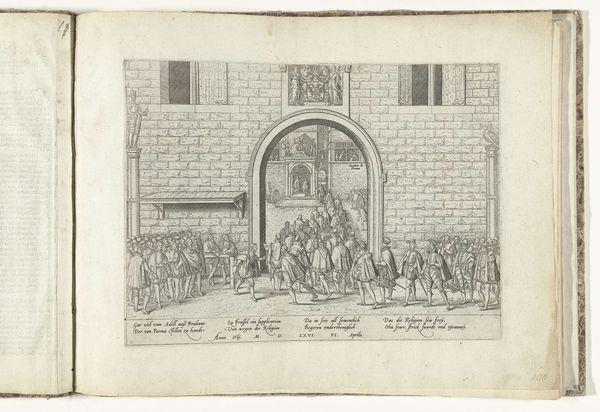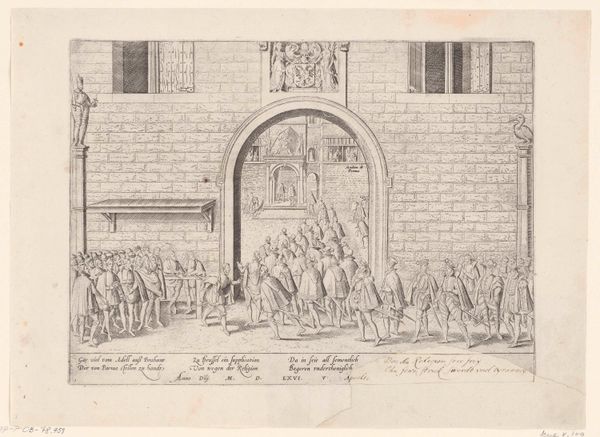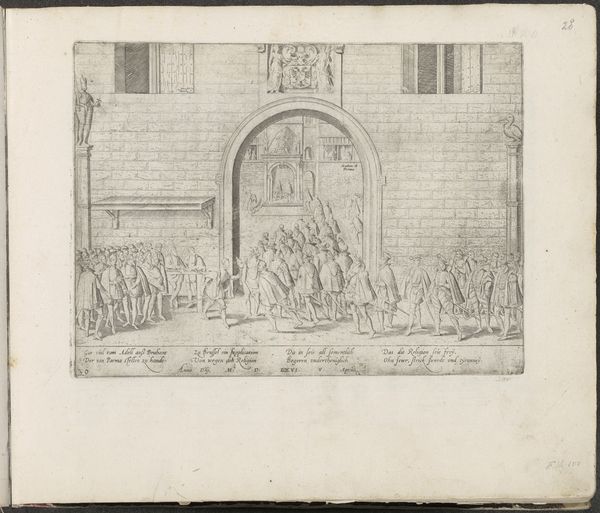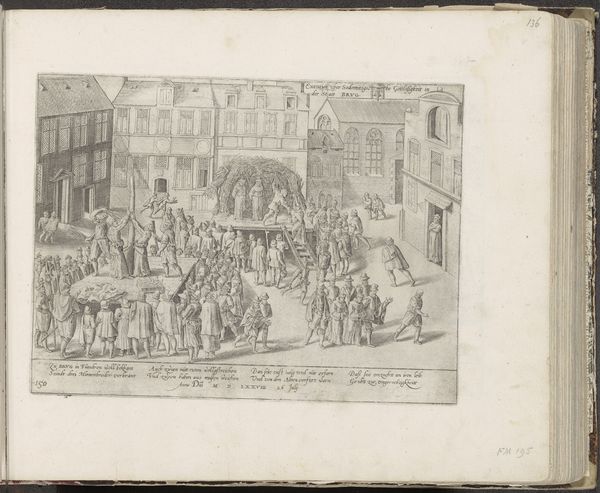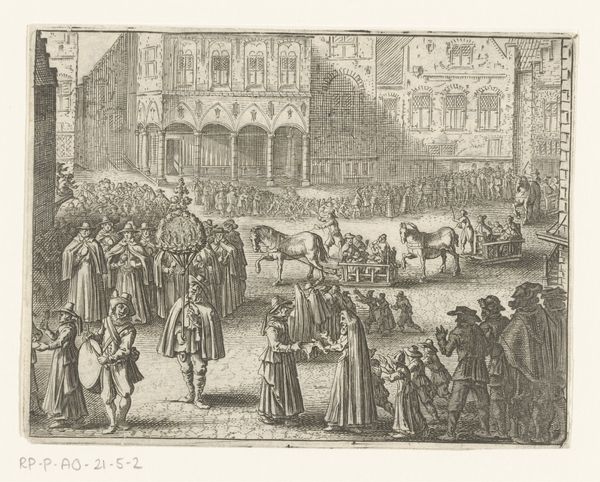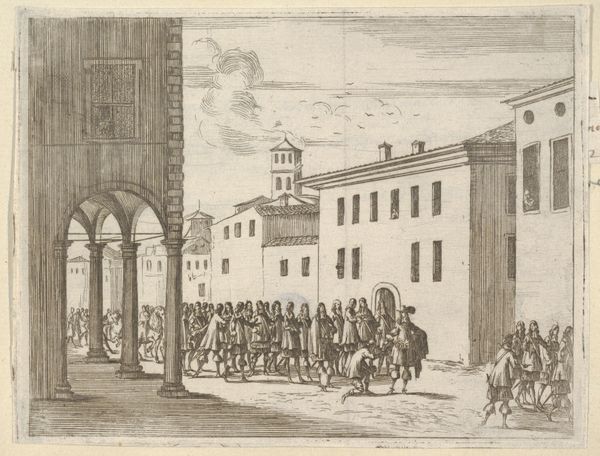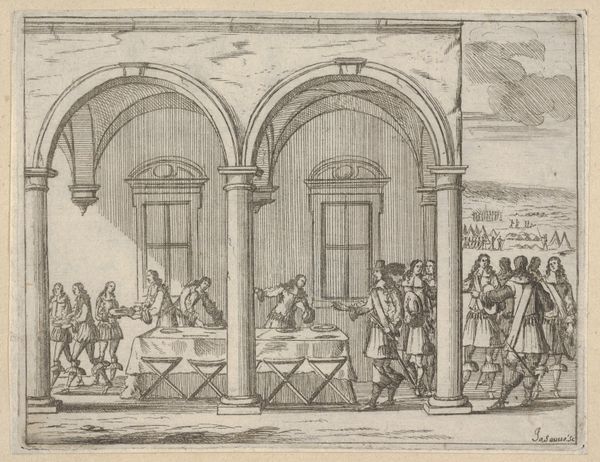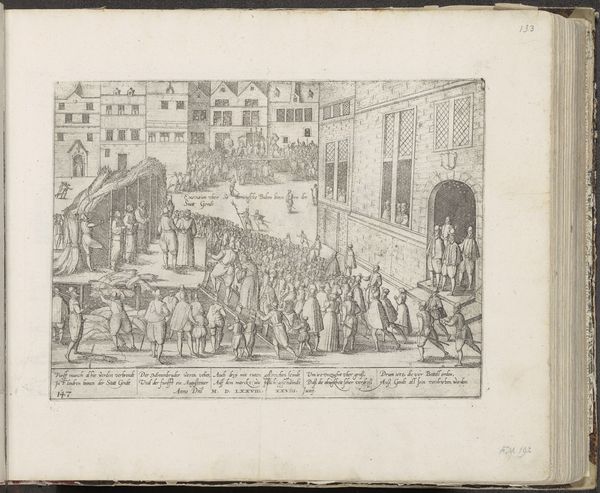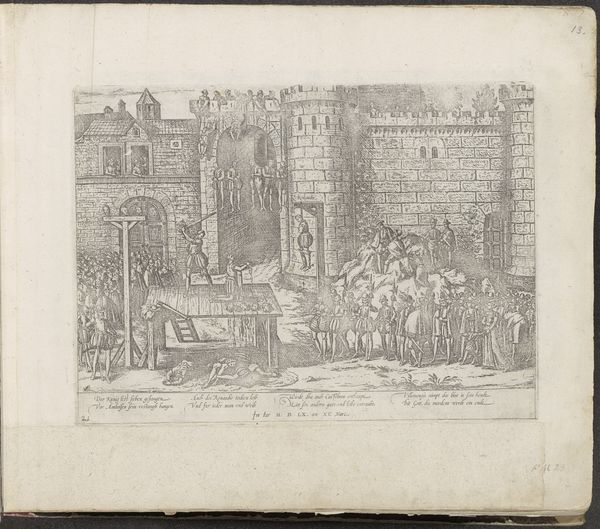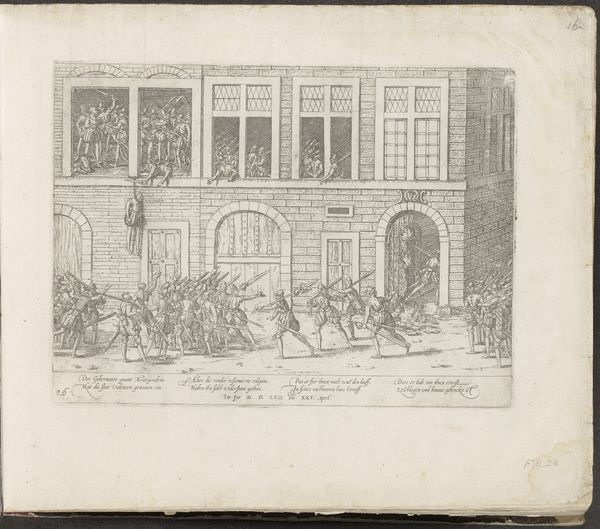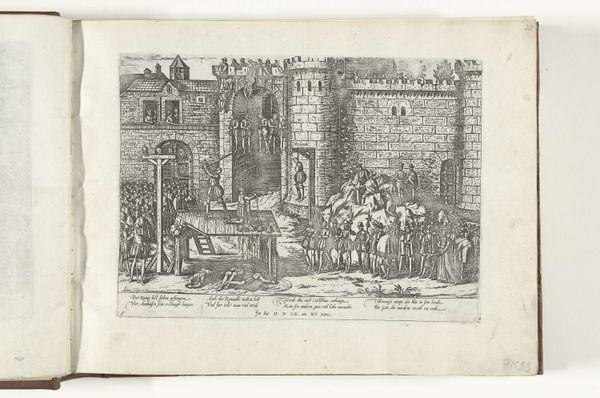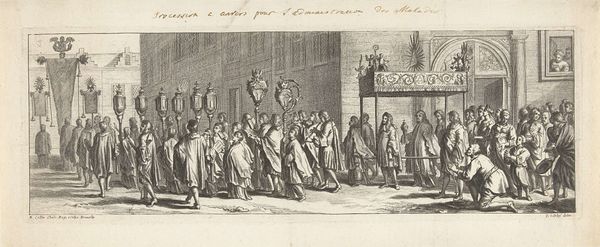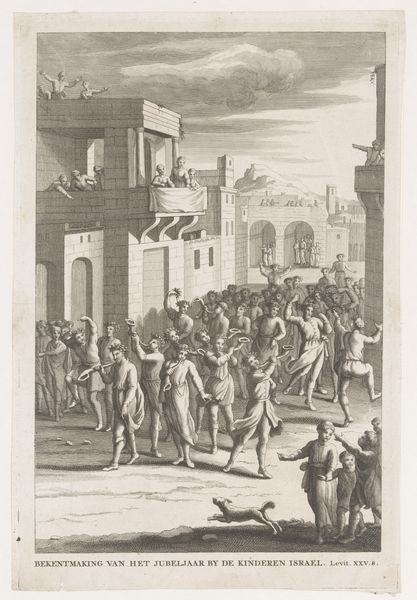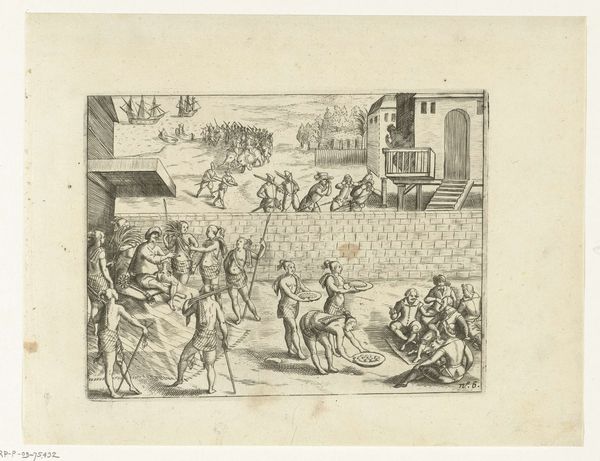
Het aanbieden van het Smeekschrift aan de hertogin van Parma, 1566 1588
0:00
0:00
franshogenberg
Rijksmuseum
print, engraving
#
medieval
#
narrative-art
# print
#
cityscape
#
genre-painting
#
history-painting
#
northern-renaissance
#
engraving
Dimensions: height 267 mm, width 367 mm
Copyright: Rijks Museum: Open Domain
Curator: This piece hums with suppressed energy, doesn't it? The light is somehow both bright and muted, as if reality itself is holding its breath. It makes me think of pivotal moments—heavy with potential for change. Editor: Well, it’s certainly meant to capture a pivotal moment. What we're looking at is "The Presentation of the Petition to the Duchess of Parma, 1566," an engraving dating back to 1588 by Frans Hogenberg, here on display at the Rijksmuseum. Curator: Hogenberg…Ah, right. The feel of Northern Renaissance art; a controlled riot, somehow. Can you give us some context to chew on? Editor: Absolutely. This print illustrates a key episode leading up to the Dutch Revolt. The supplicants, members of the League of Nobles, are presenting a petition to Margaret of Parma, the Governor of the Netherlands, requesting a moderation of the harsh policies against Protestants. The sheer audacity! It's like poking a bear with a feather duster. Curator: Yes! And there's something in their faces... a quiet dignity mingled with outright fear! I imagine those corridors filled with whispers and glances, each person weighing the risks. Tell me, is it just me, or does that doorway act almost like a... well, a birth canal of sorts, funneling history into existence? Editor: (chuckles) A rather vivid metaphor! But it’s true. The architecture is fascinating, really framing this act of supplication, emphasizing the power dynamics at play. That fortified entrance underscores the inaccessibility of power, yet there they are, forcing an audience. It shows how these moments, laden with civic hopes, get etched into the stones of the state. Curator: Power structures distilled into brick and mortar. Amazing. Did this action actually manage to nudge the course of history, or was it a beautiful, futile gesture? Editor: It definitely wasn't futile. Though the immediate response was limited, the petition fueled widespread unrest. This sparked iconoclasm, which finally led to more direct forms of rebellion against Spanish rule. So yes, that "birth canal," to revisit your image, gave way to something momentous, though also something tragically violent. Curator: So, what we see is the quiet instant *before* the tempest breaks loose... Thank you. Editor: It’s a pleasure. Looking at it, one really grasps how art documents not only the events, but how such crucial points evolve under specific political circumstances. A picture doesn't lie, but it certainly selects.
Comments
No comments
Be the first to comment and join the conversation on the ultimate creative platform.
